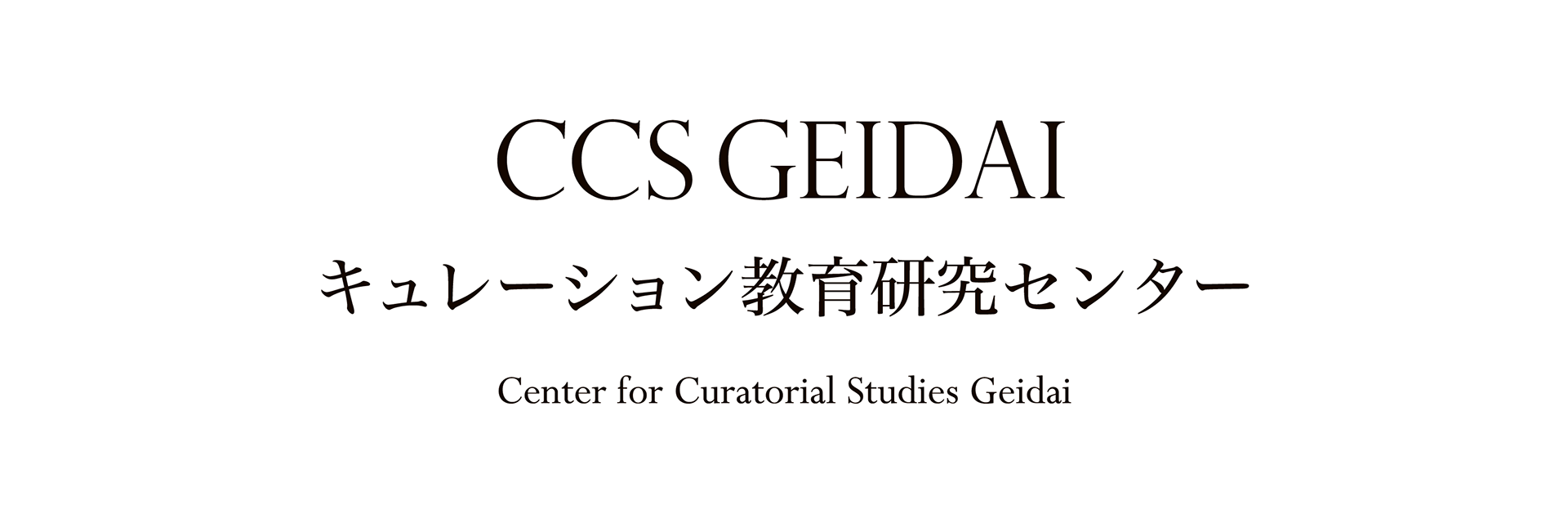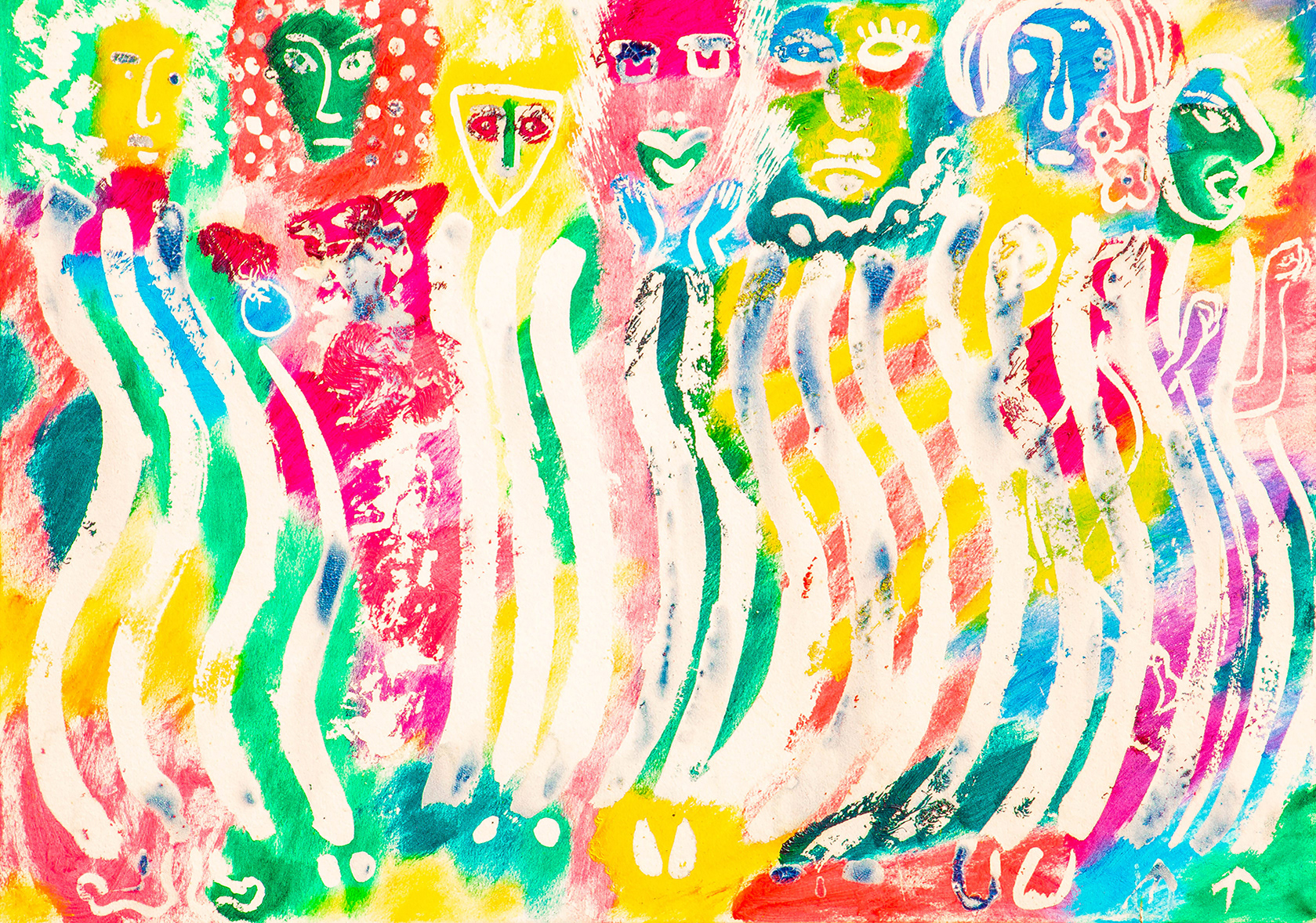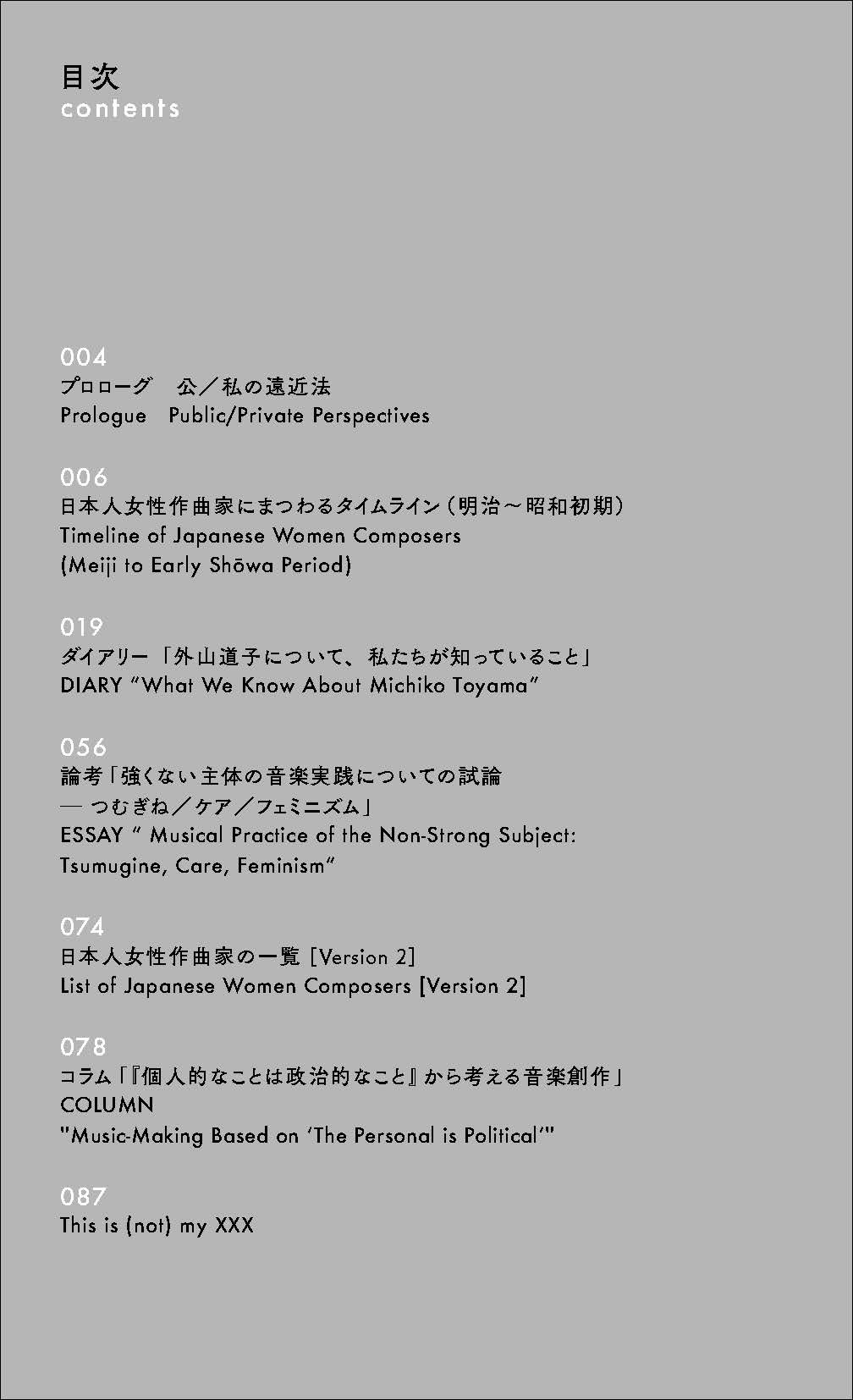

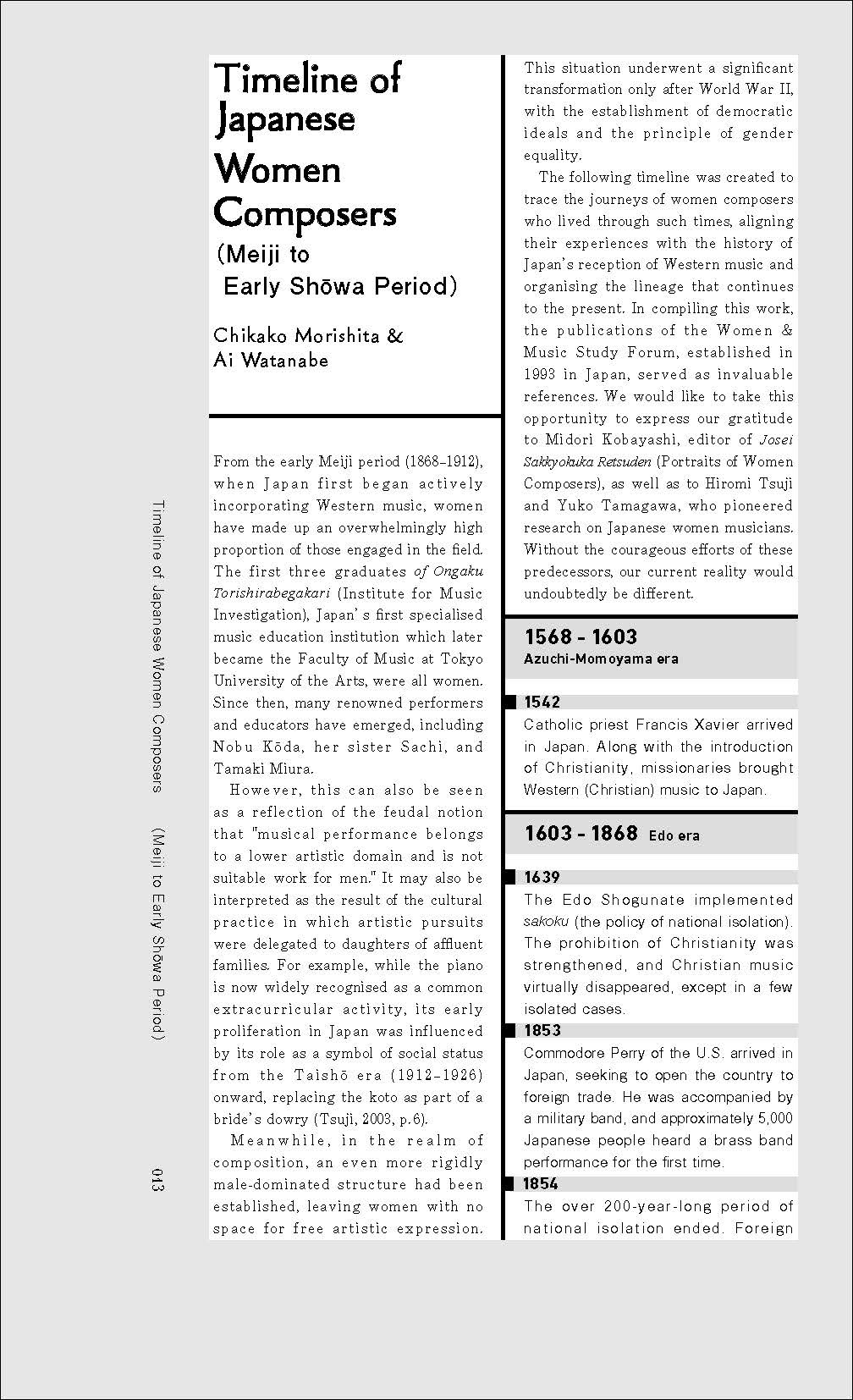



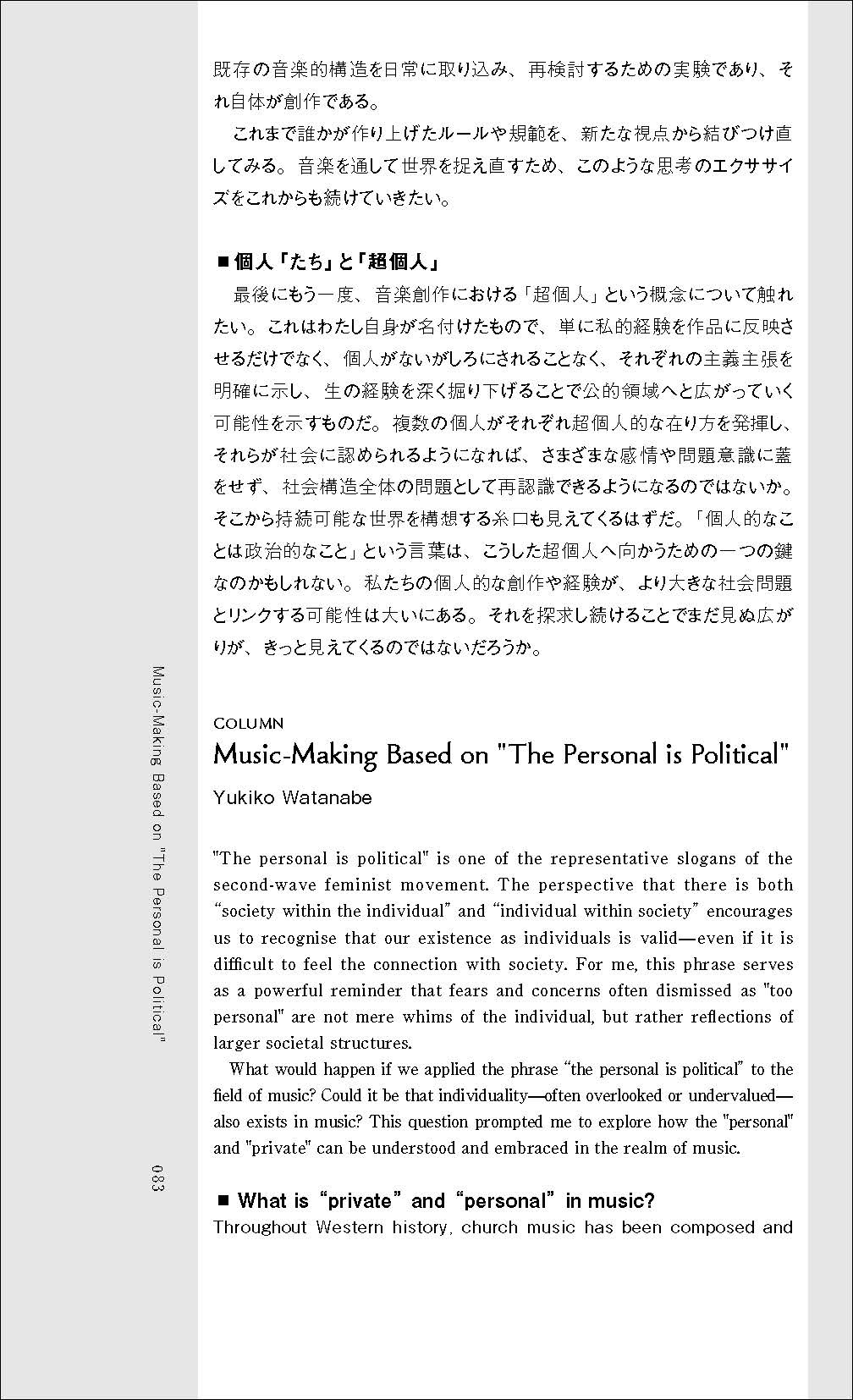
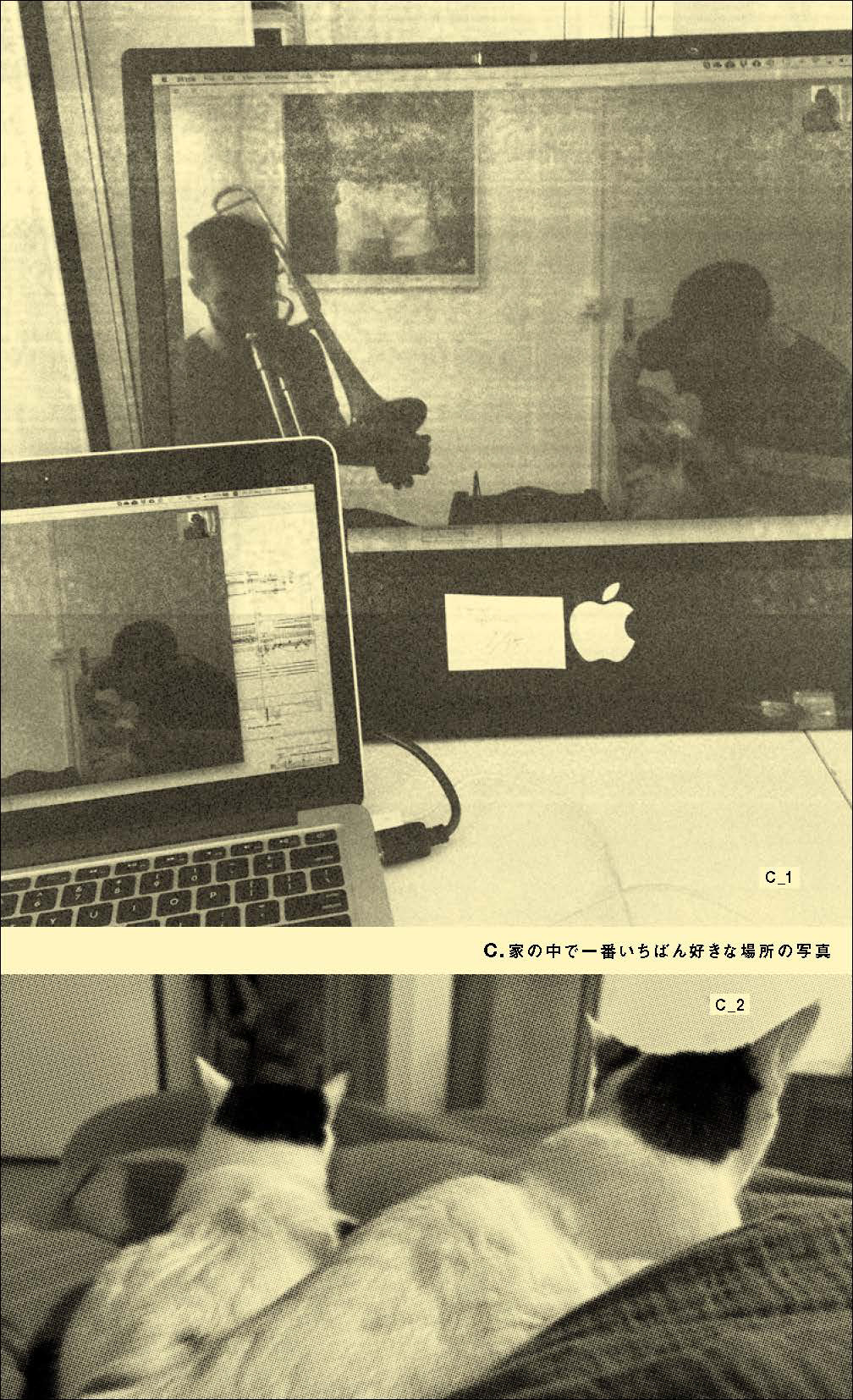
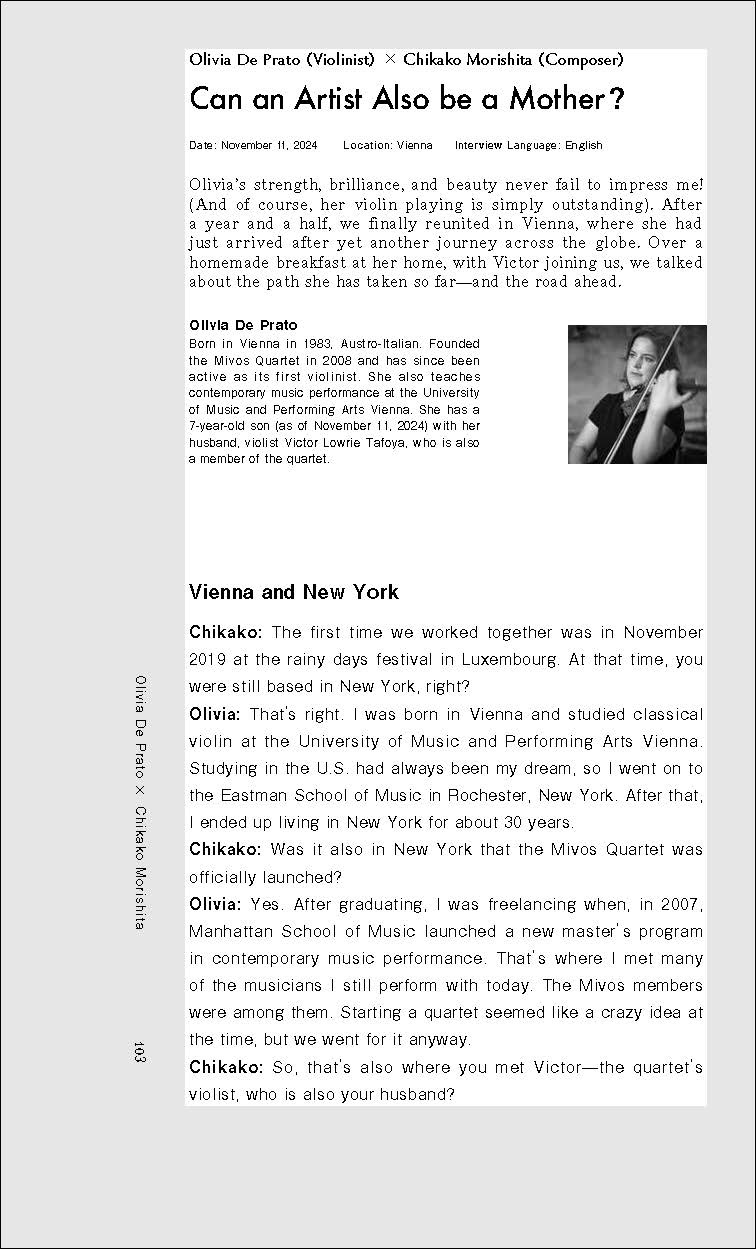
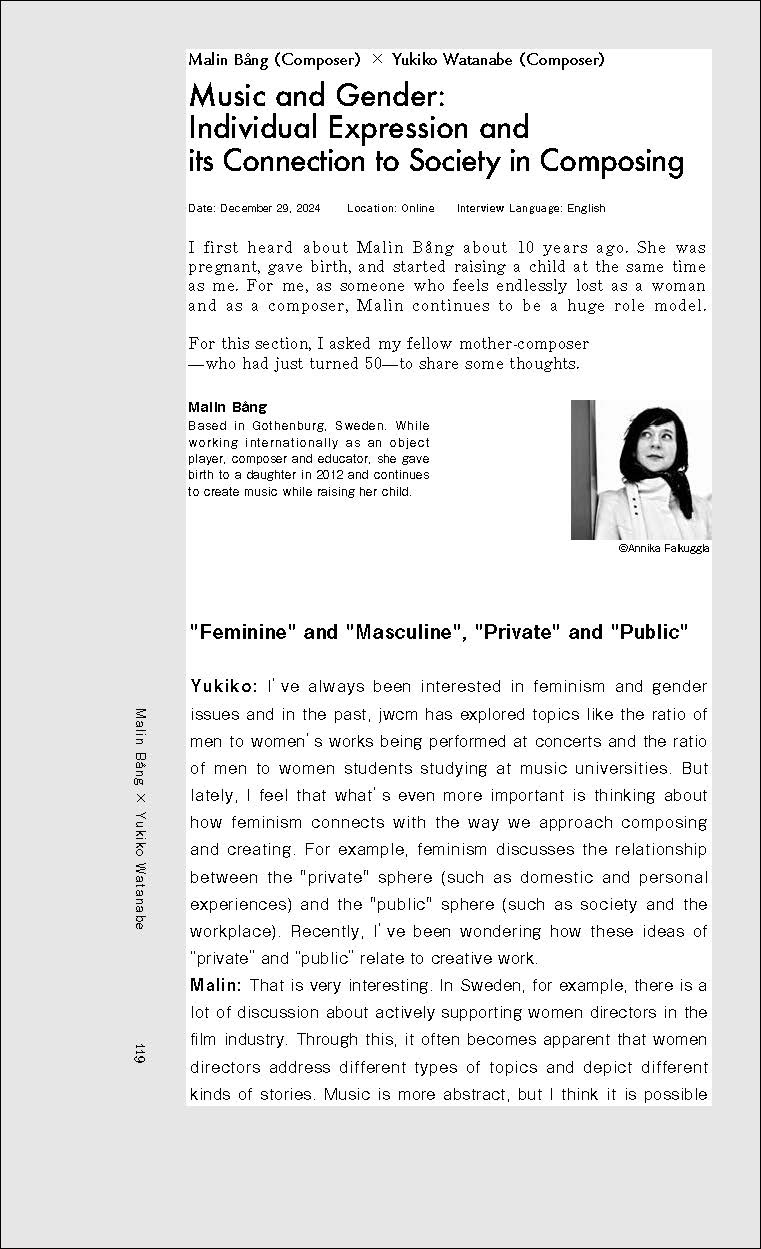

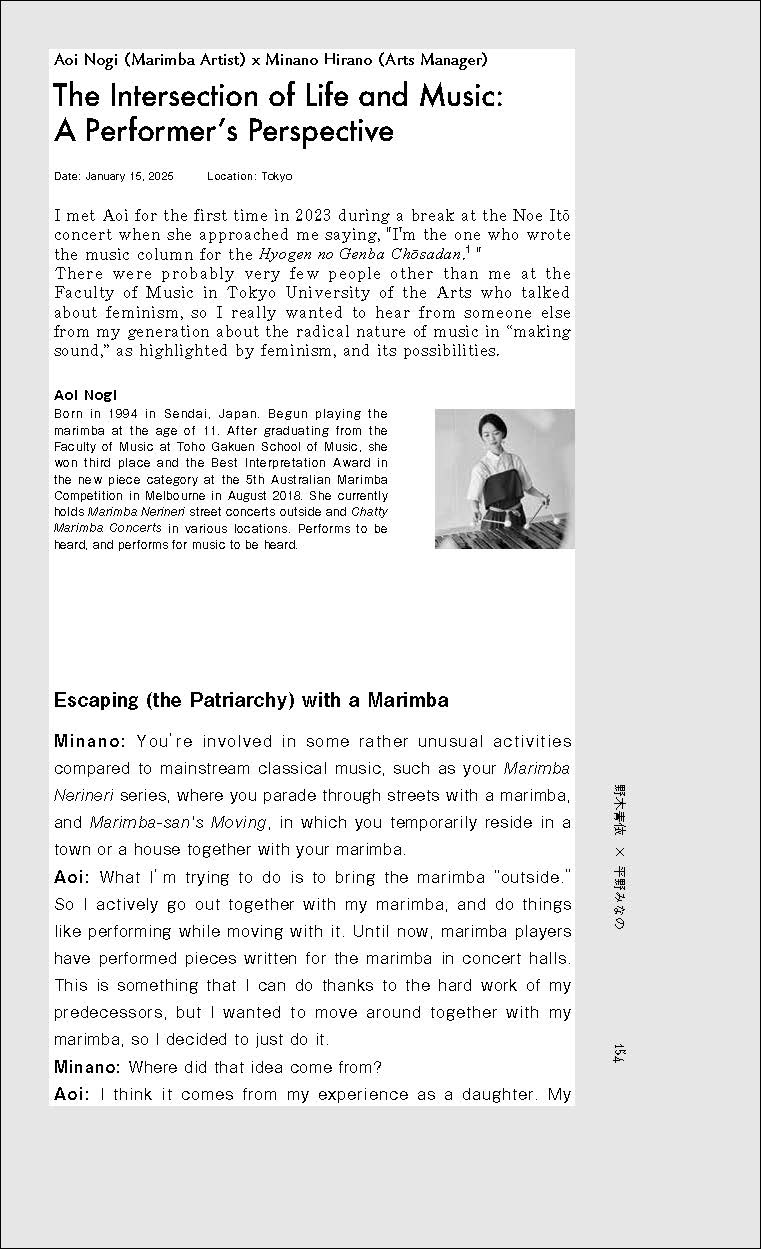
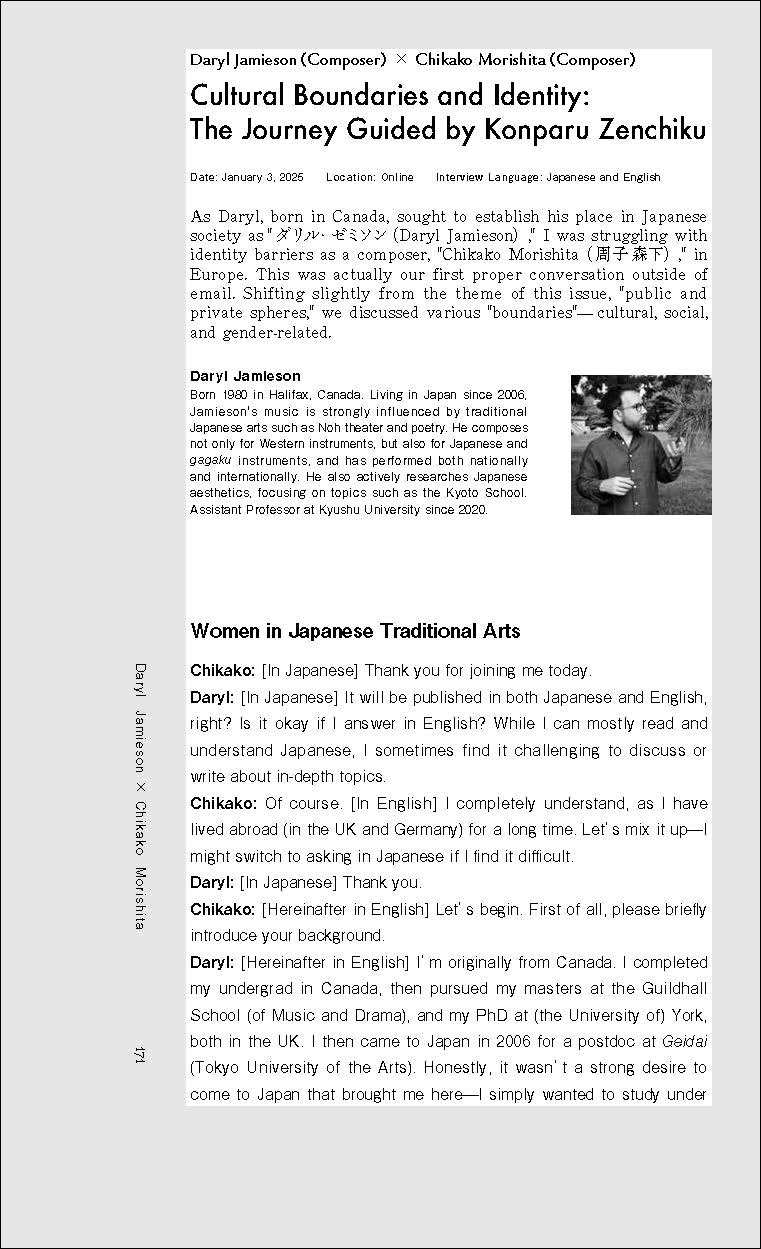
This is (not) my lullaby
----------------------------
To be honest though? I find it very difficult to have a discussion on feminism in this field. Everyone responds very sincerely to the "Is there a gender in music?”debate with their own experiences and pie charts. But is it truly necessary to choose one or the other?
After reading Judith Butler, I wanted to stop answering such a silly question as "Is there a gender in music?" I want to refocus our gaze beyond the question itself, and examine the structures/systems in which such questions arise.
Because, if you think about it, why do we have to answer this question anyway? (Or rather, who doesn't have to think about such things?)
——from "Prologue"
-----------------------------
■ About Book ■
Price: 2,000 yen (2,200yen incl. tax)
Size: 128mm ×210mm
Page: 184 pages
Language: Japanese and English
Size: 128mm ×210mm
Page: 184 pages
Language: Japanese and English
Organising/Editing/Writing: Minano Hirano, Chikako Morishita, Yukiko Watanabe, Ai Watanabe, Alissa Osada-Phornsiri
Translation: Alissa Osada-Phornsiri, Chikako Morishita,
Design: Satoko Miyakoshi
Printing: Shimaya Publishing Co.
Published on 20 April 2025
Publisher: Japanese Women Composers Meeting
-----------------------------
■ Contents ■
01 Prologue Public/Private Perspectives / Minano Hirano
02 DIARY “What We Know About Michiko Toyama” / Chikako Morishita
03 Timeline of Japanese Women Composers (Meiji to Early Shōwa Era) / Chikako Morishita & Ai Watanabe
04 ESSAY “ Musical Practice of the Non-Strong Subject: Tsumugine, Care, Feminism“ / Minano Hirano
05 List of Japanese Women Composers [Version 2] / Ai Watanabe & Chikako Morishita
06 COLUMN "Music-Making Based on ‘The Personal is Political’" / Yukiko Watanabe
07 This is (not) my XXX
08 This is (not) our dialogue
09 Epilogue: The Art of Weaving / Chikako Morishita
Note added on June 4, 2025: There was an error in the table of contents. The correct page numbers are 074→076 and 078→080.
◾️ This is (not) our dialogue [Interviews] ◾️
Olivia De Prato (Violinist) x Chikako Morishita (Composer)
Can an Artist Also be a Mother?
Born in Vienna in 1983, Austro-Italian. Founded the Mivos Quartet in 2008 and has since been active as its first violinist. She also teaches contemporary music performance at the University of Music and Performing Arts Vienna. She has a 7-year-old son (as of November 11, 2024) with her husband, violist Victor Lowrie Tafoya, who is also a member of the quartet.
Malin Bång (Composer) x Yukiko Watanabe (Composer)
Music and Gender: Individual Expression and its Connection to Society in Composing
Based in Gothenburg, Sweden. While working internationally as an object player, composer and educator, she gave birth to a daughter in 2012 and continues to create music while raising her child.
Yuko Iida (Researcher of Japanese Modern and Contemporary Literature) x Ai Watanabe (Composer)
Gender Categories and the Diversity of Women
Born in Aichi Prefecture, Japan. Graduated from the School of Letters at Nagoya University in 1989, completed her studies at the Graduate School of Humanities at Nagoya University in 1995, and obtained her PhD (Literature) in 1997. After working at Kobe College, she became a professor at the Graduate School of Humanities at Nagoya University in 2014. Her research focuses on modern Japanese culture and literature from the perspective of gender.
Aoi Nogi (Marimba Artist) x Minano Hirano (Arts Manager)
The Intersection of Life and Music: A Performer’s Perspective
Born in 1994 in Sendai, Japan. Begun playing the marimba at the age of 11. After graduating from the Faculty of Music at Toho Gakuen School of Music, she won third place and the Best Interpretation Award in the new piece category at the 5th Australian Marimba Competition in Melbourne in August 2018. She currently holds Marimba Nerineri street concerts outside and Chatty Marimba Concerts in various locations. Performs to be heard, and performs for music to be heard.
Daryl Jamieson (Composer) x Chikako Morishita (Composer)
Cultural Boundaries and Identity: The Journey Guided by Konparu Zenchiku
Born 1980 in Halifax, Canada. Living in Japan since 2006, Jamieson's music is strongly influenced by traditional Japanese arts such as Noh theater and poetry. He composes not only for Western instruments, but also for Japanese and gagaku instruments, and has performed both nationally and internationally. He also actively researches Japanese aesthetics, focusing on topics such as the Kyoto School. Assistant Professor at Kyushu University since 2020.
About cover
The spider is an ironic motif against the patriarchy, symbolising an imprisoned woman who continues to build her web even after it is destroyed. With the ambiguous nature of being considered both a pest exterminator, yet also a pest, she has the duality of being both strong and intelligent enough to protect her home. The key color yellow is derived from The Yellow Wallpaper (1892) by Charlotte Perkins Gilman, an early feminist literary work. In Denis Villeneuve's film Enemy (2013), yellow and spiders are depicted as symbols of patriarchy.
Supported by TOKYO GEIDAI “I LOVE YOU” project (The collaborative research project “Art and Gender” by Mizuho × Center for Curatorial Studies Geidai )
